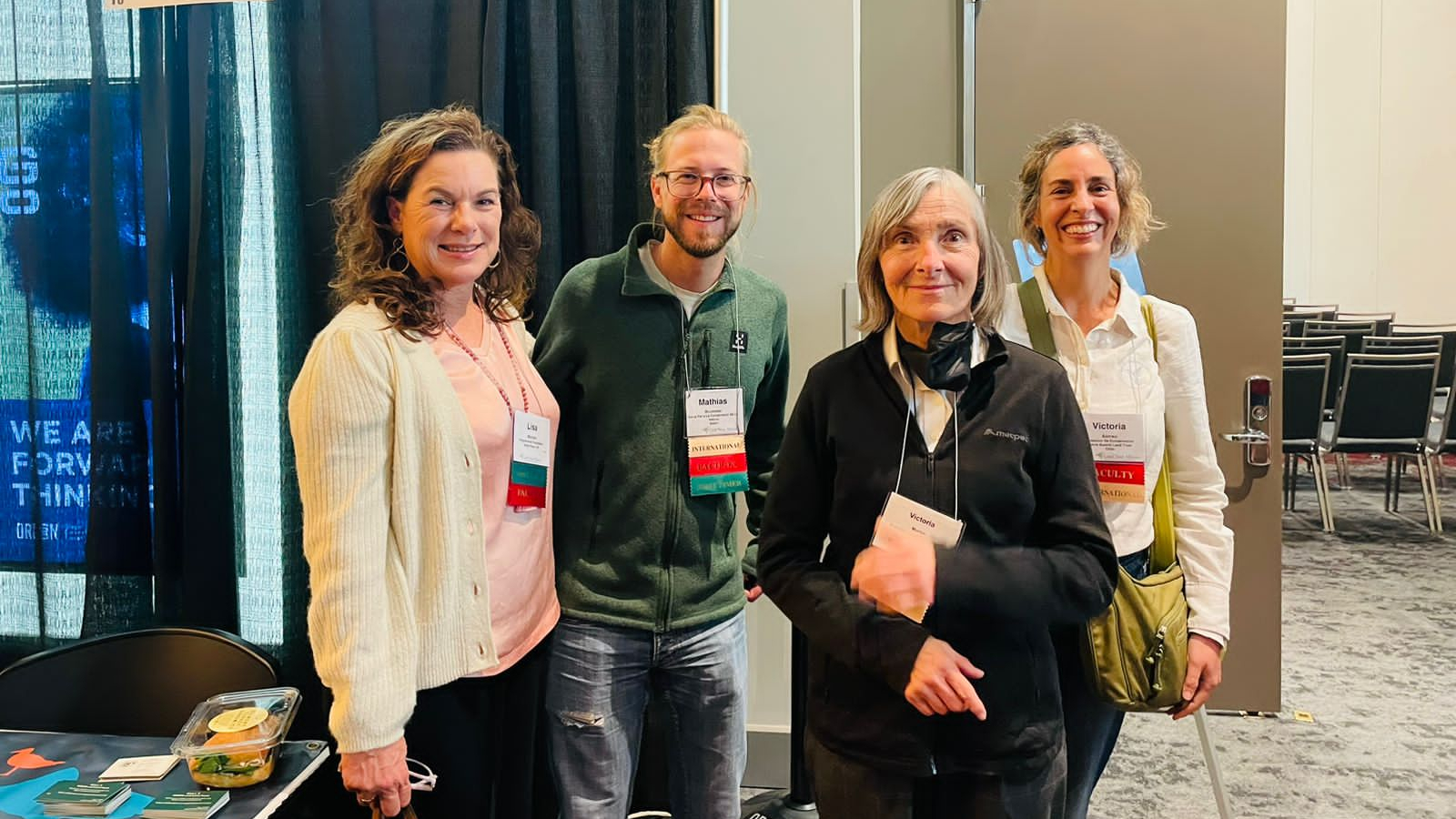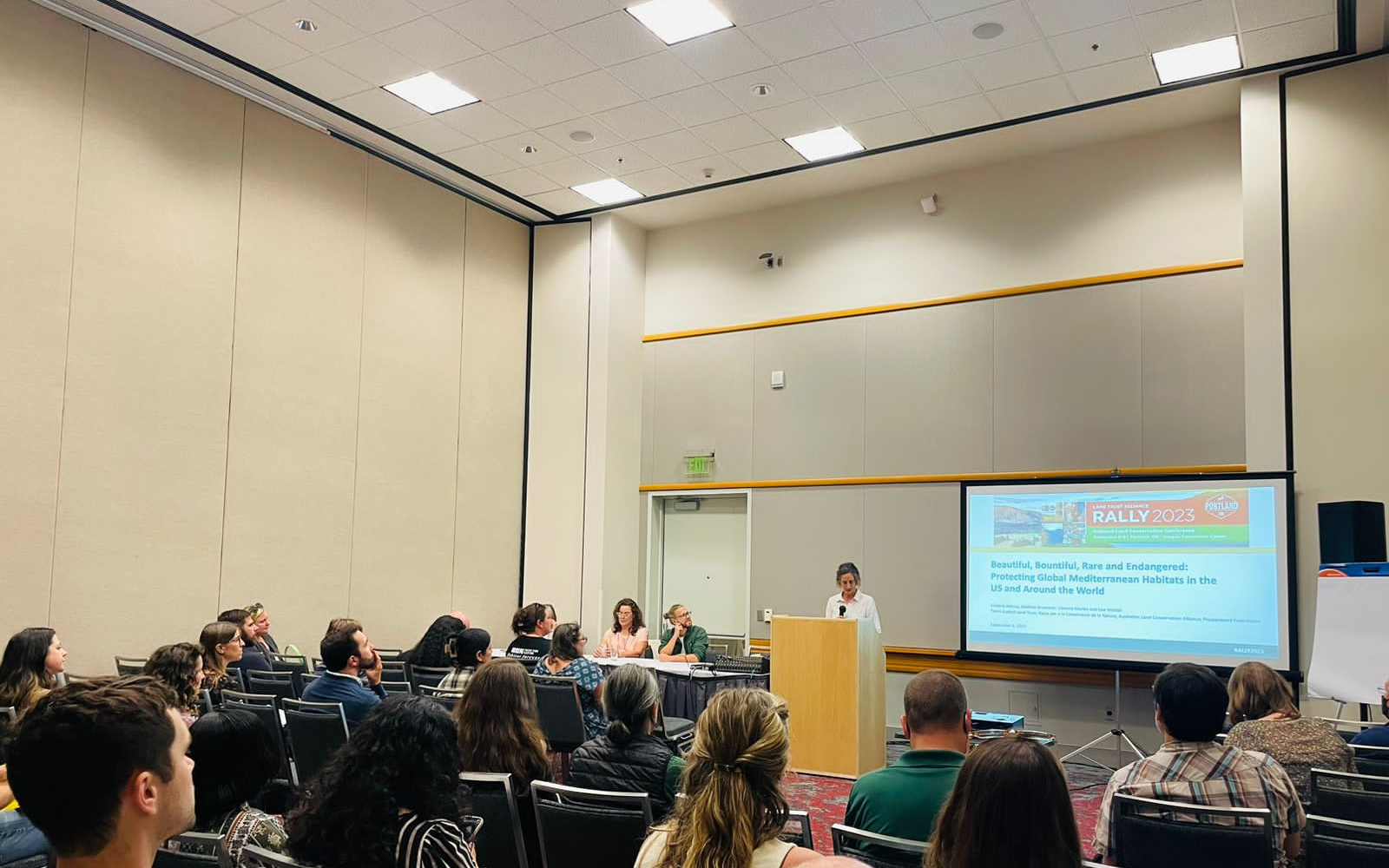XCN is eager to exchange knowledge and practices around private land conservation from anywhere, as biodiversity protection and stewardship are global complex topics for which magic solutions do not exist.
Beautiful, bountiful, rare and endangered: protecting global Mediterranean habitats in the US and around the world. With this title, we presented private land conservation tools of EU and specifically of Catalonia at the US Land Trust Rally 2023 in Portland, Oregon (US). The conference brings together over 2000 conservationists of all around the US to talk and discuss on private land conservation.
Truly, Mediterranean ecosystems share common trades such as its landscape mosaic, its exposition to climate change and large biodiversity, which is often rare and endangered. But Mediterranean ecosystems also share other social trades such as the prevalence of private land. Consequently it is of no surprise that in Australia, US, Chile and Spain similar private land conservation movements emerged. All these tools can contribute significantly to achieve 30 by 30 targets set by the international agenda.
From XCN, we have taken the opportunity to explain the European project LIFE ENPLC, and how land stewardship contracts are applied in Catalonia as voluntary agreements between a land owner and a stewardship organization to protect or restore biodiversity. Stewardship contracts in Catalonia usually last for 10 years and a stewardship organization tends to have up to 3 agreements and up to 71% of these agreements are on Natura 2000 sites.
In the workshop Fundación Tierra Austral from Chile, showcased how the real rights of partial use have been approved legally and financial incentives exist. The real right of partial use is a secure and flexible core land conservation agreement that is similar to the conservation easement in the US and the conservation covenant in Australia. That means, that they are permanent agreement, that run with the land, meaning that it is enforceable on succeeding generations of landowners, and it can accommodate income-producing sustainable land uses. Tierra Austral has used it to protect ten landscapes comprised of both high priority Mediterranean habitat and Patagonian forest
On the discussion table, also the Australian Land Conservation Alliance was present, who applies and promotes conservation covenants. This tools is very similar to the real rights of partial use applied in Chile as they are a voluntary, permanent and legally-binding tool which is placed on a property’s title to ensure native vegetation is protected forever. Hence it restricts certain activities that might damage native habitat. Finally, Land Trust Pepperwood, from California showcased howthey are adapting to fire.
The workshop depicted how private land conservation movements have emerged in different legal and social realities with shared environmental challenges around the globe.


